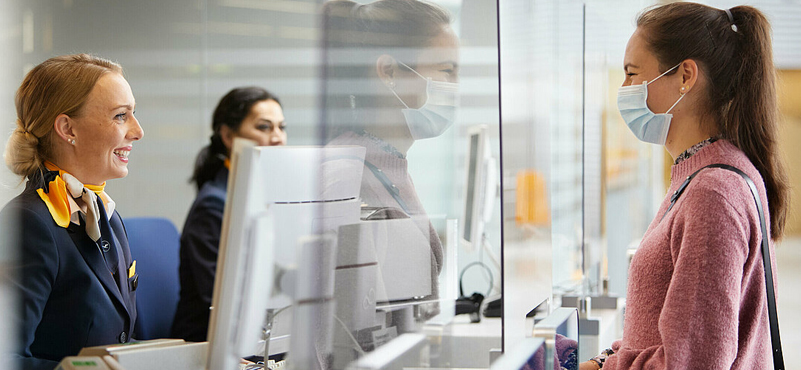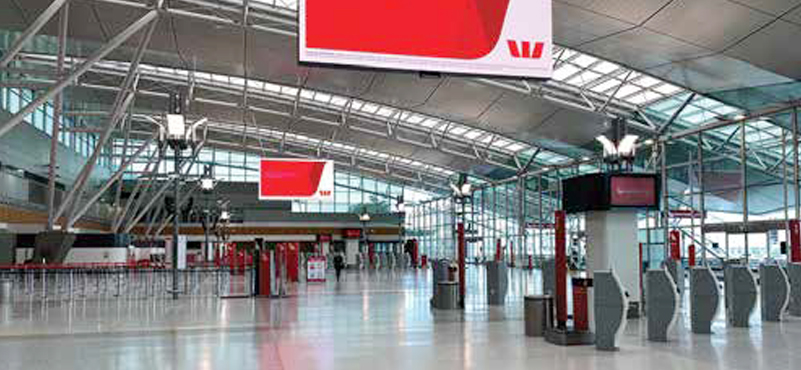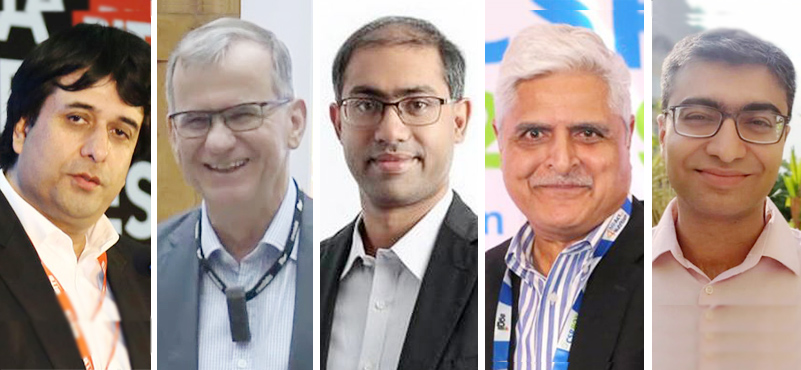SriLankan Airlines may opt to introduce flights to new points like Ahmedabad in north, apart from further bolstering its presence in south India with new connections from Vishakhapatnam and Trichy to better manage the growing tide of Indian travellers heading for the SriLankan shores. TF spoke with Chinthaka Weerasinghe, Manager Northern India, SriLankan Airlines to decipher the island nation’s flag carrier’s impending business strategy, trends in tourism emanating from India and a lot more. Excerpts:
 How many destinations are being currently serviced by the SriLankan Airlines in India?
How many destinations are being currently serviced by the SriLankan Airlines in India?
As of 1st of November, we are servicing 11 points. It makes us the largest airline in terms of number of points we operate from India. No other airline operates from so many points that we do.
And much of it is pre-dominantly in the south India?
Yes, pre-dominantly in the south. We have three points in Tamil Nadu which are Chennai, Tiruchirappalli and Madurai. We have three points in Kerala that includes Trivandrum and Cochin. Then we have Mumbai, Delhi, Varanasi, Gaya and, also, Kolkata. In Mumbai and Delhi, we are planning to expand.
Much of the northern cities are driven by Buddhist tourists, because as you know Sri Lanka is a Buddhist country. In fact, in terms of tourist arrivals into Sri Lanka, we are in the top five. So, it is majorly catering to the pilgrim market. It operates more on a charter basis. It is a scheduled flight, but operates on a charter model; it is seasonal.
What sort of aircrafts have you deployed?
It is all narrow-bodied operations. It makes commercial sense. The cost of operating a narrow-body aircraft is half the cost of operating a wide-bodied aircraft. We would rather give more frequencies than getting a wide-bodied aircraft.
What about number of frequencies?
The number of frequencies is 106 per week. Of course, it is not comparable to Emirates and Etihad – which have about around 180 frequencies. They are the number one and number two, respectively. But we are in the top five in terms of number of frequencies per week. In terms of seat capacity, too, we are in the top five. In the north India, frequencies are not enough. So, we are planning to expand.
Frequency enhancement aside, what about new destinations?
We are looking at destination expansion, too. India will be very much in our forward looking plan to increase frequencies and destinations alike.
Which cities are next on the radar for you?
On the pipeline is Vishakhapatnam, Coimbatore, Calicut and Ahmedabad. So, quite a few are in the pipeline, but nothing is confirmed as of now.
Colombo is the hub for SriLankan Airlines. So, could you give us a sense of how the outbound from India is into Colombo? It would give us a better picture of the state of tourism.
India is the number one tourist market for Sri Lanka. We have had about 3.2 lakhs of inbound tourist arrivals into Sri Lanka. This year, we are expecting the numbers to swell to 4 lakhs. Overall tourist arrivals into Sri Lanka is about 2.2 to 2.3 million. So, you can see that a huge chunk comes from India. Even the traffic from north India – Delhi and Mumbai – is coming mainly into Sri Lanka.
In addition to that, we are also expanding our connections to the Indian Ocean destinations. We have a prominent connection to Maldives. Add to that, we have already started operations to Grand Island; we are the first international airline to operate into Grand Island. We also have Seychelles. So, we are offering connections to these destinations. This is our main focus, when it comes to our market here in Delhi, too.
Let us talk about performance in yields. How is it going? What sort of load factors has the airline been clocking?
Load factors are very high; yields too are panning out well. That has made us look for some more frequencies. As soon as we have the aircrafts available, we will be deploying them.
What about Sri Lankan inbound into India? How is that panning out for you?
Our main focus is the pilgrim market. So, we have two scheduled flights – which operate on the charter model – into Varanasi and Gaya. It is mainly a half-yearly operation. In addition to Varanasi and Gaya, we are also channelling pilgrim movement via Kolkata and Delhi – and also via Chennai. Some tourists come to Chennai and take a train all the way to Bodh Gaya. There are different budget packages and travellers with different spend capacity. It is a hectic journey for them, but going to Bodh Gaya is a very special thing for the elderly in Sri Lanka.
Also, we are looking at promoting tourism to the Odisha region, because a lot of Buddhist origins are found there. There is also a huge movement to Puttaparthi via Bengaluru. There is also movement to Tirupati via Chennai. So, the Sri Lankan inbound movement will mainly be focussed on pilgrim tours and spiritual tourism in India.
One major change in the past half-a-decade has been the rise of OTAs and transformation in the distribution channels. Are you looking at newer distribution channels and working with OTAs? How are you engaging with the Indian clientele? What is the strategy?
OTAs, as you correctly mentioned, these days are a part and parcel of distribution strategy. More or less, they are our top agents now. Almost half of our bookings are coming through online platforms. The reason is that they have the capacity to sell, not only on an all-India basis, but globally. We do a lot of focussed promotions, not on the basis of fares though. Fare wise, we give the same to all travel agents.
We use these OTAs as channels for distribution.
What is driving Indian outbound into Sri Lanka and what are some key destinations that have gained prominence?
If you look at the Indian region, Sri Lanka is still a relatively new destination. Until 2009, we had a conflict going on, but now it is perhaps one of the most peaceful countries in the world. So, there is a big surge in tourism. They mainly go for beaches, especially from places like Delhi. But they also like to do a round tour of the country. Normal packages consist of 4 nights and 5 days. For them, sometimes, it is easier and more cost-effective to go to Sri Lanka, than to go to Kerala or Goa. One is the value of the Indian Rupee. When you convert it into Sri Lankan Rupee, it is almost double. Visa process is easy. It is visa-on-arrival; now it is online. Add to that the flying time. Even the airfare costs lesser than some of the domestic routes. Also, not many travellers from north India have experienced Sri Lanka. That is why they are travelling.
The new trend is that youngsters are going to Colombo city, mainly for nightlife, shopping and casinos. Travelling for gaming is a new trend. A sizable number of travellers are going to Macau, so a lot of them are also going to Colombo for that, especially after Nepal has also closed down casinos. So, it is very popular with young tourists.
What about Northern Sri Lanka? Have you witnessed an uptick in movement into regions like, say, Jaffna?
Not too much in the northern part, because there are not many tourist attractions there, unless it is VFR or ethnic movement. But you get best of beaches in the east of the country – Trincomalee and Pasikudah are very popular. But it has not become popular with the Indian outbound yet. It is more popular with Western and European tourists. That is one area which could be promoted more among the Indian tourists.
Where do you get your most traffic from? Which is your busiest route?
Of Course, Chennai and Colombo. We are operating 4 flights a day and all of them are plying on full capacity, because Jaffna and other northern parts have now opened up. There is a lot of ethnic traffic and that route is very popular among the Indian tourists.
As an industry insider, what are some of the challenges that you envisage in promoting South Asian tourism or tourism within South Asia?
The biggest problem is the travel part of it – the visa part of it. For example, we here at SriLankan Airline cover SAARC region better than any other country. We have daily flights to Bangladesh and Karachi. We have 3 flights a day to Lahore. We are even looking at Kathmandu in the near future – it is in the pipeline. Add to that, how we cover India and Maldives shows that no other airline covers SAARC better than we do. We are now a member of One Alliance and can come up with travel packages covering the entire South Asian region. But the biggest issue is the visa issue. I think only Sri Lanka has easy visa-on-arrival facility, and Maldives, but in order to further expand intra-regionally, it must be discussed, at least for genuine tourists. There is a lot of regional integration that can come about.




































